Feta cheese is a beloved ingredient in many cuisines around the world, known for its tangy flavor and crumbly texture. When it comes to feta, two prominent varieties often find themselves in culinary discussions: Danish feta and Greek feta. In this comprehensive guide, we’ll delve into the nuances of these two types of feta cheese, exploring their origins, production methods, flavor profiles, and culinary uses. Whether you’re a cheese connoisseur or a curious foodie looking to elevate your culinary creations, join us on a flavorful journey through the realm of Danish feta and Greek feta. #### The Origins of Danish Feta and Greek Feta Feta cheese has a rich history that dates back centuries, with both Denmark and Greece laying claim to their unique versions of this iconic cheese. Greek feta, arguably the more traditional and well-known variety, has protected designation of origin status in the European Union, recognizing its ties to Greek culinary heritage. Authentic Greek feta is typically made from sheep’s milk or a blend of sheep’s and goat’s milk, sourced from specific regions in Greece such as Macedonia and Thrace. On the other hand, Danish feta emerged as a variation of the original Greek feta, crafted in Denmark using pasteurized cow’s milk. While Danish feta may not boast the same pedigree as its Greek counterpart, it has carved out its own niche in the world of feta cheese, offering a milder flavor profile that appeals to a broader audience. #### Production Methods: Contrasts and Similarities The production methods for Danish feta and Greek feta share some similarities while also featuring notable differences that contribute to their distinct characteristics. Traditional Greek feta is made using the ‘Old World’ method of cheese production, involving the brining of curdled milk and aging the cheese in wooden barrels to develop its signature tangy taste. In contrast, Danish feta follows a more modern approach to cheese production, utilizing pasteurized cow’s milk instead of sheep’s or goat’s milk. This deviation in milk source directly influences the taste and texture of Danish feta, resulting in a milder and creamier cheese compared to the crumbly and robust flavors of Greek feta. Despite these differences, both Danish feta and Greek feta undergo a similar brining process, where the cheese is soaked in a saltwater solution to enhance its flavor and preservation. This shared technique contributes to the salty profile that is characteristic of feta cheese, regardless of its geographic origin. #### Flavor Profiles: Exploring the Taste of Danish Feta and Greek Feta One of the most significant distinctions between Danish feta and Greek feta lies in their flavor profiles. Greek feta is renowned for its sharp and tangy notes, with a pronounced saltiness that cuts through its creamy texture. The use of sheep’s milk or a blend of sheep’s and goat’s milk in Greek feta imparts a complex and robust flavor that is deeply rooted in Mediterranean culinary traditions. In comparison, Danish feta offers a more subdued taste experience, characterized by a milder and creamier profile that appeals to palates seeking a gentler feta cheese. The use of cow’s milk in Danish feta results in a cheese that is less tangy and salty than its Greek counterpart, making it a versatile option for incorporating into various dishes without overpowering other flavors. When it comes to cooking applications, the flavor differences between Danish feta and Greek feta can influence how they are used in recipes. Greek feta’s bold and assertive taste stands out in salads, pastries, and baked dishes, adding a distinct Mediterranean flair to culinary creations. On the other hand, Danish feta’s subtle flavor profile makes it a versatile ingredient for dishes where a more delicate cheese presence is desired, such as creamy sauces, dips, and sandwiches. #### Nutritional Value and Health Considerations Both Danish feta and Greek feta offer nutritional benefits as dairy products rich in essential nutrients like calcium, protein, and vitamins. However, there are nuances in their nutritional profiles that may impact dietary choices for individuals with specific health considerations. Greek feta, being traditionally derived from sheep’s milk or a blend of sheep’s and goat’s milk, tends to be higher in fat content compared to Danish feta, which is made from cow’s milk. While fat content can vary depending on the milk source and production methods, those looking to moderate their fat intake may opt for Danish feta as a lower-fat alternative to Greek feta. In terms of protein content, both Danish feta and Greek feta provide a good source of protein, essential for muscle growth and overall health. The amino acids found in feta cheese make it a valuable protein source for vegetarians and individuals looking to diversify their protein intake beyond meat and poultry. When it comes to lactose intolerance, some individuals may find Danish feta more easily digestible than Greek feta due to differences in lactose content. Cow’s milk, used in Danish feta production, contains less lactose than sheep’s milk, making Danish feta a potentially more tolerable option for those with lactose sensitivity. #### Culinary Uses: Embracing the Versatility of Feta Cheese Feta cheese’s crumbly texture and tangy flavor make it a versatile ingredient that can elevate a wide range of dishes, from salads and pastas to sandwiches and appetizers. Danish feta and Greek feta each bring their unique attributes to the table, offering chefs and home cooks diverse options for incorporating feta cheese into their culinary creations. Greek feta shines in traditional Greek dishes like spanakopita, Greek salads, and mezze platters, where its bold flavor can stand up to robust ingredients like olives, tomatoes, and fresh herbs.
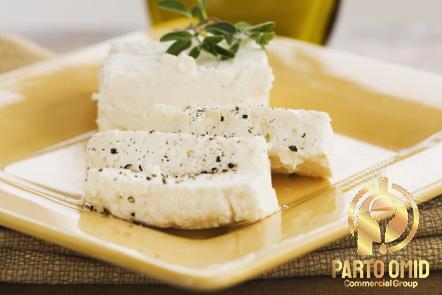
.
 The crumbly texture of Greek feta also makes it a popular choice for crumbling over grilled vegetables, pasta dishes, and flatbreads, adding a burst of tangy goodness to every bite. On the other hand, Danish feta’s creamy texture and milder taste make it a versatile companion to a variety of cuisines beyond Greek fare. Danish feta can be whipped into dips and spreads, melted into creamy sauces for pasta or vegetables, or crumbled over pizzas and burgers for a decadent touch. Its subtle flavor profile allows Danish feta to play a supporting role in dishes where the cheese subtly complements other ingredients without overwhelming them. #### Sustainability and Ethical Considerations In addition to flavor and nutritional considerations, sustainability and ethical practices play a crucial role in the production of feta cheese, whether Danish or Greek. Sustainable dairy farming practices, such as rotational grazing, organic feed sourcing, and animal welfare standards, contribute to the overall quality and ethical integrity of feta cheese production. Greek feta, with its deep-rooted ties to traditional farming practices in Greece, often emphasizes small-scale, family-owned dairy farms that prioritize animal care and sustainable agricultural methods. By supporting authentic Greek feta producers, consumers can contribute to the preservation of cultural heritage and sustainable farming traditions that have shaped the production of feta cheese for generations. In contrast, Danish feta producers adhere to strict regulations and quality control measures that ensure the sustainability of dairy farming practices in Denmark. From environmentally friendly farming techniques to ethical treatment of animals, Danish feta production upholds standards that align with Denmark’s reputation for agricultural excellence and innovation. #### Pricing and Availability: Making Informed Choices When it comes to purchasing feta cheese, price and availability are factors that can influence consumer decisions between Danish feta and Greek feta. Greek feta, being a protected designation of origin product, often commands a higher price point due to its artisanal production methods, regional specificity, and cultural significance. Consumers seeking an authentic taste of Greece may be willing to invest in premium Greek feta products that reflect the craftsmanship and tradition behind this iconic cheese.
The crumbly texture of Greek feta also makes it a popular choice for crumbling over grilled vegetables, pasta dishes, and flatbreads, adding a burst of tangy goodness to every bite. On the other hand, Danish feta’s creamy texture and milder taste make it a versatile companion to a variety of cuisines beyond Greek fare. Danish feta can be whipped into dips and spreads, melted into creamy sauces for pasta or vegetables, or crumbled over pizzas and burgers for a decadent touch. Its subtle flavor profile allows Danish feta to play a supporting role in dishes where the cheese subtly complements other ingredients without overwhelming them. #### Sustainability and Ethical Considerations In addition to flavor and nutritional considerations, sustainability and ethical practices play a crucial role in the production of feta cheese, whether Danish or Greek. Sustainable dairy farming practices, such as rotational grazing, organic feed sourcing, and animal welfare standards, contribute to the overall quality and ethical integrity of feta cheese production. Greek feta, with its deep-rooted ties to traditional farming practices in Greece, often emphasizes small-scale, family-owned dairy farms that prioritize animal care and sustainable agricultural methods. By supporting authentic Greek feta producers, consumers can contribute to the preservation of cultural heritage and sustainable farming traditions that have shaped the production of feta cheese for generations. In contrast, Danish feta producers adhere to strict regulations and quality control measures that ensure the sustainability of dairy farming practices in Denmark. From environmentally friendly farming techniques to ethical treatment of animals, Danish feta production upholds standards that align with Denmark’s reputation for agricultural excellence and innovation. #### Pricing and Availability: Making Informed Choices When it comes to purchasing feta cheese, price and availability are factors that can influence consumer decisions between Danish feta and Greek feta. Greek feta, being a protected designation of origin product, often commands a higher price point due to its artisanal production methods, regional specificity, and cultural significance. Consumers seeking an authentic taste of Greece may be willing to invest in premium Greek feta products that reflect the craftsmanship and tradition behind this iconic cheese.
..
 On the other hand, Danish feta offers a more accessible and affordable option for those looking to experiment with feta cheese in their recipes. Danish feta products are widely available in supermarkets and specialty stores, making it convenient for consumers to incorporate this versatile cheese into their everyday cooking without breaking the bank. When comparing prices between Danish feta and Greek feta, it’s essential to consider factors such as milk source, production methods, and brand reputation that can influence the cost of feta cheese. While Greek feta may be perceived as a luxury item due to its pedigree and regional authenticity, Danish feta provides a budget-friendly alternative that doesn’t compromise on quality or flavor. #### Conclusion: Embracing the Diversity of Feta Cheese In the world of feta cheese, the rivalry between Danish feta and Greek feta offers food enthusiasts a delightful palette of flavors, textures, and culinary possibilities to explore. Whether you prefer the bold tang of Greek feta or the creamy subtlety of Danish feta, both varieties bring a unique charm to dishes that showcase the versatility and richness of feta cheese. As you navigate the realms of Danish feta vs Greek feta, consider the nuances of flavor, production methods, nutritional value, culinary uses, sustainability practices, and pricing that shape your feta cheese experience. Whether you’re savoring a classic Greek salad adorned with crumbled feta or indulging in a Danish feta-infused creamy sauce, let the world of feta cheese inspire your culinary creativity and appreciation for the art of cheese-making. ### Danish Feta vs Greek Feta: Unraveling the Delightful World of Feta Cheese (Continued) #### The Art of Pairing Feta Cheese with Complementary Flavors Pairing feta cheese with complementary flavors can elevate its taste profile and create memorable gastronomic experiences. Whether you’re enjoying Danish feta or Greek feta, exploring flavor combinations that enhance the natural tanginess and creaminess of feta can lead to delightful culinary discoveries.
On the other hand, Danish feta offers a more accessible and affordable option for those looking to experiment with feta cheese in their recipes. Danish feta products are widely available in supermarkets and specialty stores, making it convenient for consumers to incorporate this versatile cheese into their everyday cooking without breaking the bank. When comparing prices between Danish feta and Greek feta, it’s essential to consider factors such as milk source, production methods, and brand reputation that can influence the cost of feta cheese. While Greek feta may be perceived as a luxury item due to its pedigree and regional authenticity, Danish feta provides a budget-friendly alternative that doesn’t compromise on quality or flavor. #### Conclusion: Embracing the Diversity of Feta Cheese In the world of feta cheese, the rivalry between Danish feta and Greek feta offers food enthusiasts a delightful palette of flavors, textures, and culinary possibilities to explore. Whether you prefer the bold tang of Greek feta or the creamy subtlety of Danish feta, both varieties bring a unique charm to dishes that showcase the versatility and richness of feta cheese. As you navigate the realms of Danish feta vs Greek feta, consider the nuances of flavor, production methods, nutritional value, culinary uses, sustainability practices, and pricing that shape your feta cheese experience. Whether you’re savoring a classic Greek salad adorned with crumbled feta or indulging in a Danish feta-infused creamy sauce, let the world of feta cheese inspire your culinary creativity and appreciation for the art of cheese-making. ### Danish Feta vs Greek Feta: Unraveling the Delightful World of Feta Cheese (Continued) #### The Art of Pairing Feta Cheese with Complementary Flavors Pairing feta cheese with complementary flavors can elevate its taste profile and create memorable gastronomic experiences. Whether you’re enjoying Danish feta or Greek feta, exploring flavor combinations that enhance the natural tanginess and creaminess of feta can lead to delightful culinary discoveries.
…
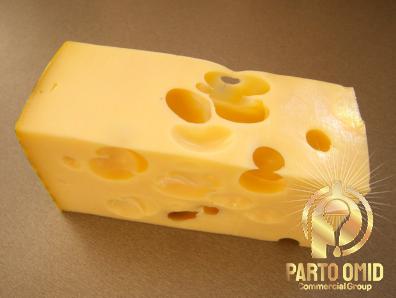 For Greek feta aficionados, consider pairing this robust cheese with ingredients that amplify its Mediterranean essence. Olives, fresh tomatoes, cucumbers, and oregano are classic companions to Greek feta, creating a harmonious union of flavors that transport your taste buds to the sun-kissed shores of Greece. Drizzling extra virgin olive oil and a sprinkle of sea salt over crumbled Greek feta can enhance its savory notes and add a luscious texture to salads and mezze platters. For those embracing Danish feta’s mild and creamy profile, the pairing possibilities are equally enticing. Danish feta’s versatility allows it to meld seamlessly with a range of flavors, making it an excellent choice for experimenting with sweet and savory combinations. Try topping Danish feta on bruschetta with honey and walnuts for a delightful appetizer, or layer it in a grilled vegetable sandwich with pesto for a decadent lunch option. The mild creaminess of Danish feta also pairs well with fresh herbs like dill, mint, and parsley, adding a burst of freshness to any dish. #### Exploring Regional Variations and Modern Innovations While Danish feta and Greek feta represent two prominent varieties of feta cheese, the world of feta extends beyond these traditional distinctions, encompassing regional variations and modern innovations that continue to redefine the boundaries of this beloved cheese. In addition to Greek and Danish feta, countries like Bulgaria, Romania, and France also produce their versions of feta cheese, each with its unique characteristics and flavor profiles. Bulgarian feta, known for its briny taste and crumbly texture, is often made from sheep’s milk and is a popular ingredient in Balkan cuisine. Romanian feta, on the other hand, features a smooth and tangy profile, derived from sheep’s milk or a combination of sheep’s and cow’s milk. Modern culinary trends have also sparked innovations in the world of feta cheese, giving rise to flavored feta varieties infused with ingredients like herbs, spices, and citrus zest. From sundried tomato feta to lemon and basil feta, these contemporary feta cheeses offer intriguing twists on the classic flavor profiles of Danish and Greek feta, appealing to adventurous palates seeking new taste experiences.
For Greek feta aficionados, consider pairing this robust cheese with ingredients that amplify its Mediterranean essence. Olives, fresh tomatoes, cucumbers, and oregano are classic companions to Greek feta, creating a harmonious union of flavors that transport your taste buds to the sun-kissed shores of Greece. Drizzling extra virgin olive oil and a sprinkle of sea salt over crumbled Greek feta can enhance its savory notes and add a luscious texture to salads and mezze platters. For those embracing Danish feta’s mild and creamy profile, the pairing possibilities are equally enticing. Danish feta’s versatility allows it to meld seamlessly with a range of flavors, making it an excellent choice for experimenting with sweet and savory combinations. Try topping Danish feta on bruschetta with honey and walnuts for a delightful appetizer, or layer it in a grilled vegetable sandwich with pesto for a decadent lunch option. The mild creaminess of Danish feta also pairs well with fresh herbs like dill, mint, and parsley, adding a burst of freshness to any dish. #### Exploring Regional Variations and Modern Innovations While Danish feta and Greek feta represent two prominent varieties of feta cheese, the world of feta extends beyond these traditional distinctions, encompassing regional variations and modern innovations that continue to redefine the boundaries of this beloved cheese. In addition to Greek and Danish feta, countries like Bulgaria, Romania, and France also produce their versions of feta cheese, each with its unique characteristics and flavor profiles. Bulgarian feta, known for its briny taste and crumbly texture, is often made from sheep’s milk and is a popular ingredient in Balkan cuisine. Romanian feta, on the other hand, features a smooth and tangy profile, derived from sheep’s milk or a combination of sheep’s and cow’s milk. Modern culinary trends have also sparked innovations in the world of feta cheese, giving rise to flavored feta varieties infused with ingredients like herbs, spices, and citrus zest. From sundried tomato feta to lemon and basil feta, these contemporary feta cheeses offer intriguing twists on the classic flavor profiles of Danish and Greek feta, appealing to adventurous palates seeking new taste experiences.
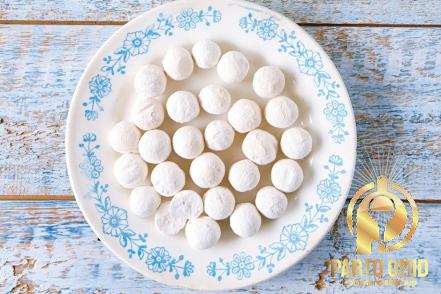
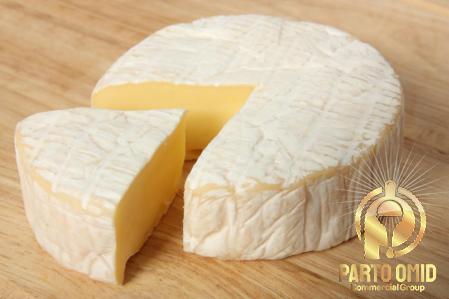
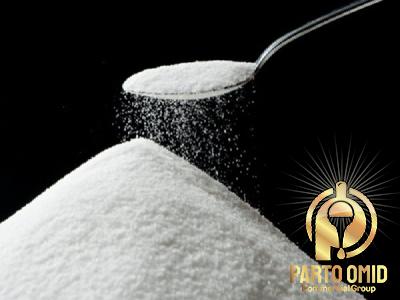
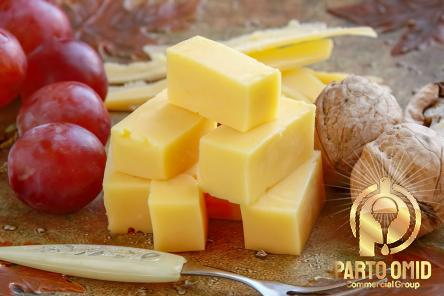
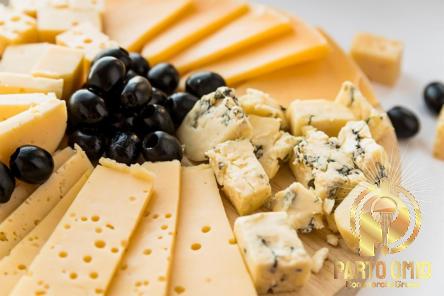
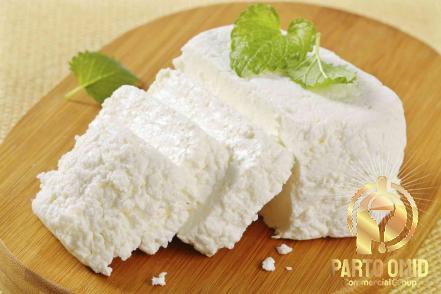
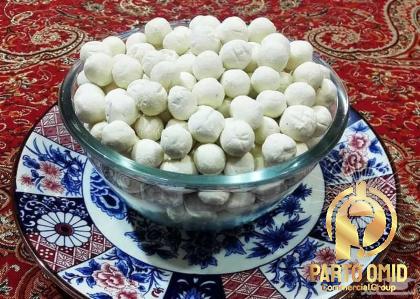
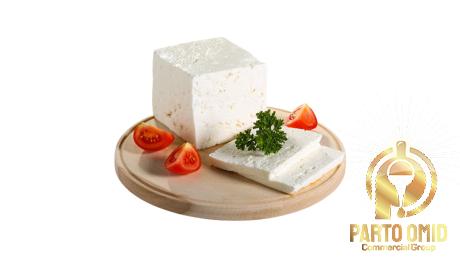
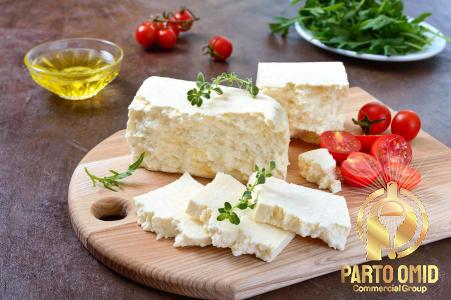
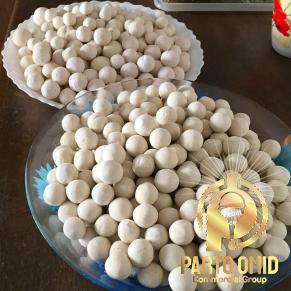
Your comment submitted.